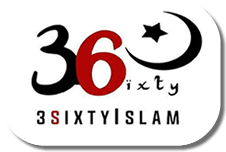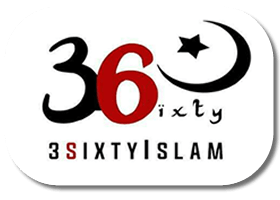
Qurbani, also known as Udhiyah, is the sacred act of animal sacrifice performed by Muslims during Eid al-Adha—The Feast of Sacrifice. It commemorates the profound devotion of Prophet Ibrahim (AS), who was prepared to sacrifice his beloved son in obedience to Allah (SWT). At the final moment, Allah replaced his son with a ram, symbolizing divine mercy and the reward for unwavering faith.
Today, Muslims across the world perform Qurbani in remembrance of this significant event, sacrificing animals to honor Allah’s command, while also sharing the meat with the poor, their relatives, and friends. This act embodies both spiritual obedience and charitable generosity—central values in Islam.
WHAT ANIMALS ARE PERMISSIBLE FOR QURBANI?
Islam outlines specific animals eligible for Qurbani: sheep, goats, cows, and camels. These animals must meet set criteria to ensure the sacrifice is meaningful and respectful.
The animal must:
-
Be in good health, free from defects (such as lameness, blindness, or extreme weakness)
-
Meet the minimum age requirement
-
Be treated humanely before and during sacrifice
These requirements ensure the offering is of value and that the act of sacrifice reflects sincerity, faith (taqwa), and reverence for Allah (SWT).
SHEEP FOR QURBANI
Sheep are among the most common animals used for Qurbani. They are widely accessible and generally more affordable. A single sheep suffices for one person’s Qurbani.
Requirements:
-
Minimum of one year old
-
Healthy and without defects
In many regions, sheep are preferred due to their availability and manageable size. Prices vary depending on location and local livestock markets.
GOATS FOR QURBANI
Goats are another widely accepted and popular option for Qurbani. Similar to sheep, one goat is equivalent to one share.
Requirements:
-
At least one year old
-
Must be healthy and free from illness or defects
Goats are especially common in areas where they are readily bred and provide a substantial amount of meat. Prices depend on breed, size, and geographic availability.
COWS FOR QURBANI
Cows are often used in Qurbani due to their size and capacity to fulfill seven shares. This makes them an economical and communal option for families or groups wishing to share in the sacrifice.
Requirements:
-
At least two years old
-
Free from any defects or illness
Cows are especially cost-effective when Qurbani is performed as a joint effort. Prices fluctuate based on region, breed, and demand—especially as Eid approaches.
CAMELS FOR QURBANI
Camels, while less commonly used due to cost and accessibility, are valid animals for Qurbani and also count for seven shares.
Requirements:
-
At least five years old
-
Healthy and suitable for sacrifice
Camels hold cultural and spiritual significance in certain regions, particularly the Middle East and North Africa. In areas where they are more prevalent, they can be a feasible group Qurbani option.
WHY ONLY THESE ANIMALS?
The animals chosen for Qurbani are all domesticated, herbivorous livestock—traditionally raised for meat and known for their docility. These animals meet the Islamic standards for purity and suitability of sacrifice, offering ample meat for distribution and fulfilling the religious spirit of giving and obedience.
Each type of animal allows Muslims from varying financial backgrounds to participate in Qurbani, fulfilling both a religious obligation and a moral duty to assist those in need.
FACTORS THAT AFFECT QURBANI ANIMAL PRICES
Several factors influence Qurbani animal prices, including:
-
Location: Rural areas tend to have lower prices than urban centers
-
Time: Prices rise as Eid al-Adha nears due to increased demand
-
Breed and size: Premium breeds and larger animals command higher prices
-
Economic conditions: Livestock supply, transportation costs, and farmer livelihoods affect pricing
Planning and ordering early can help secure a better price and ensure availability.
THE SPIRITUAL AND CHARITABLE PURPOSE OF QURBANI
While the logistics and price of Qurbani matter, the essence of this act lies in faith, obedience, and charity. It is not simply a ritual or a transaction—it is a sacrifice in the truest sense, reminding us of our commitment to Allah and our responsibility to others.
The meat from Qurbani is divided into three equal parts:
-
One-third for the family performing the sacrifice
-
One-third for relatives and friends
-
One-third for the poor and needy
This division ensures that everyone, regardless of status, can celebrate Eid and enjoy a nourishing meal.
CONCLUSION
Understanding the guidelines around Qurbani animals helps ensure your offering is valid and meaningful. To summarize:
-
Eligible animals: Sheep, goats, cows, and camels
-
Minimum age and health: Mandatory for validity
-
Price factors: Based on location, breed, demand, and size
Qurbani is a deeply spiritual tradition that mirrors the sacrifice of Prophet Ibrahim (AS) and offers an opportunity to demonstrate devotion to Allah while uplifting the lives of others. It is a celebration of obedience, compassion, and community.
May your Qurbani be accepted, and may you and your loved ones be blessed with a joyful, fulfilling Eid al-Adha.

